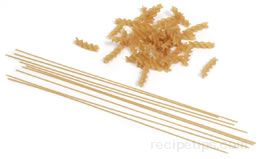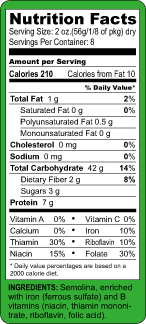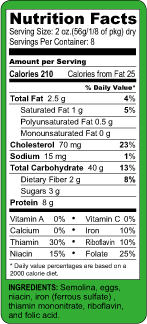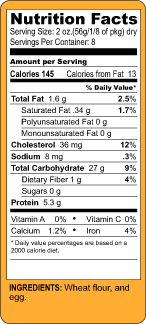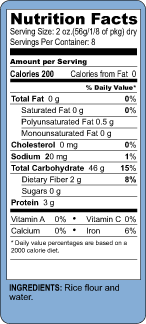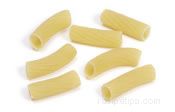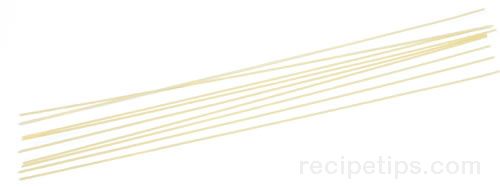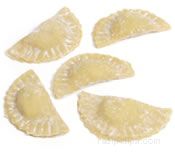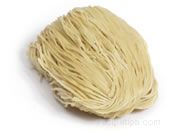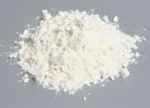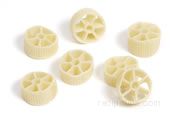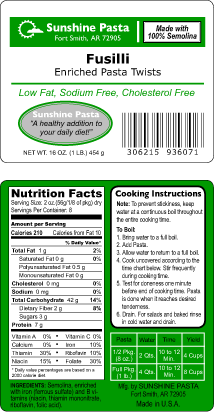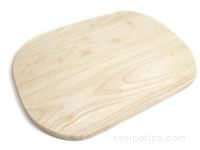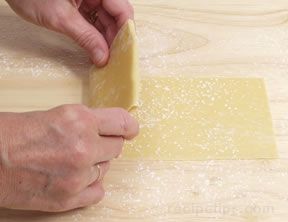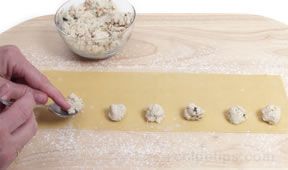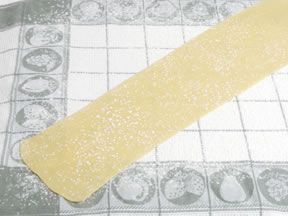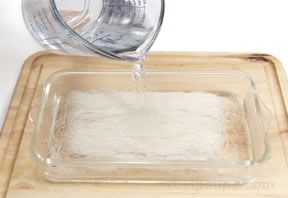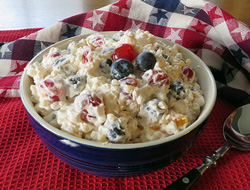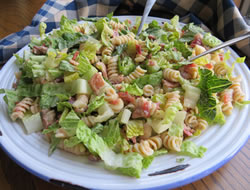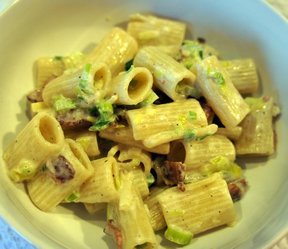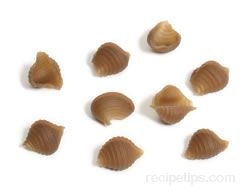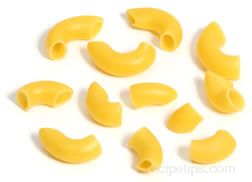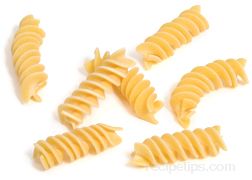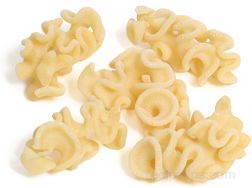|
For individuals that are concerned about their carbohydrate intake, there are low-carb pastas available. The amount of carbohydrates contained in these pastas may vary slightly from one brand to the next but they contain significantly less carbohydrates than regular pasta. The low carbohydrate pastas contain 5 to 10 carbohydrates in comparison to 40 to 45 in regular pasta.
Cooked, unsauced, pasta contains little fat and is fairly low in calories. It contains approximately 200 calories per 1 cup of cooked pasta and less than 1 gram of fat. Calories and fat content will vary slightly based on the ingredients used in the pasta dough, such as the type of flour, and whether oil and eggs were added to the dough. Although pasta is nearly fat free, the sauces and other toppings added to the pasta are what add calories and fat. To maintain the low fat, low calorie advantages of pasta, it is important to keep the sauce low-fat also. Some suggestions on reducing the amount of fat added to the pasta are shown below.
Pasta contains very little or no sodium and cholesterol. The protein contained in pasta varies according to the type of flour used. If eggs have been added to the dough, the protein content will go up slightly and the cholesterol will increase. Pasta is also fortified with folic acid according to FDA regulations. Folic acid is a nutrient that helps in the prevention of some birth defects. There have also been findings that folic acid may aid in the protection against some cancers and heart attacks. Nutrition Facts - Pasta
The chart below shows how pasta compares nutritionally to other commonly eaten foods.
The nutritional value of pasta varies according to the ingredients used in making the dough. Whether the pasta is dry, fresh or homemade, adding ingredients, such as oil, eggs, and flavoring agents, or using different types of flours will have an affect on its nutritional value. The length of time that pasta is cooked can also have an affect on its nutritional value. If the pasta is cooked too long it will start to lose more of its B vitamins into the boiling water. It is best to only cook the pasta to the "al dente" stage to prevent this from occurring. Nutrition Facts - Asian Noodles Asian noodles are made from many different types of ingredients, which results in variations of their nutritional value. Shown below are some nutritional facts for a few varieties of Asian noodles. The nutritional value of Asian noodles can also vary from one manufacturer to the next.
| |||||||||||||||||||||||||||||||||||||||||||||||||||||||||||||||
Loading
Pasta Nutritional Facts

Provided By
RecipeTips
RecipeTips

Loading
There currently aren't any reviews or comments for this article. Be the first!
Advertisement
Advertisement

